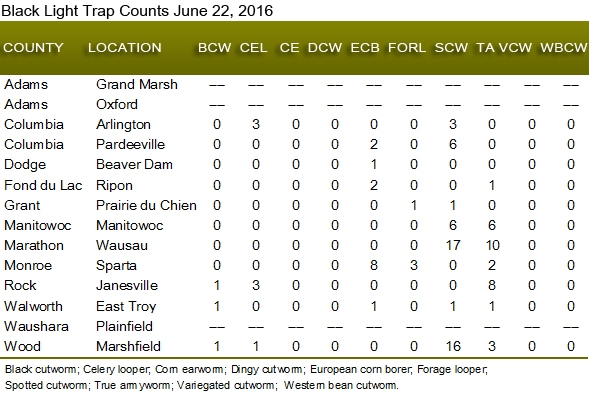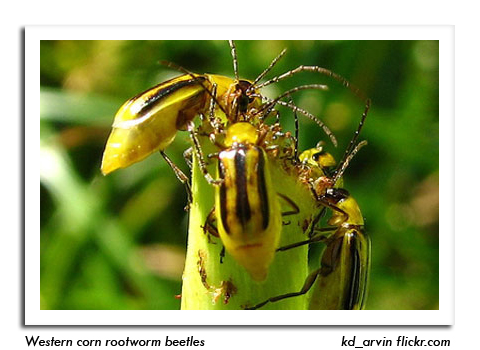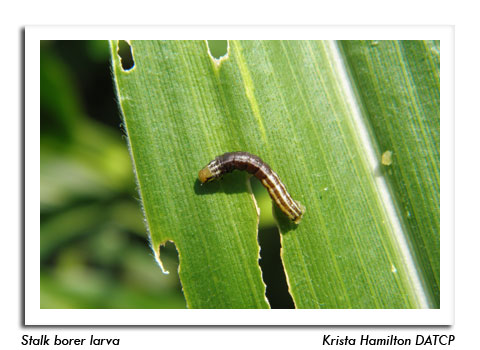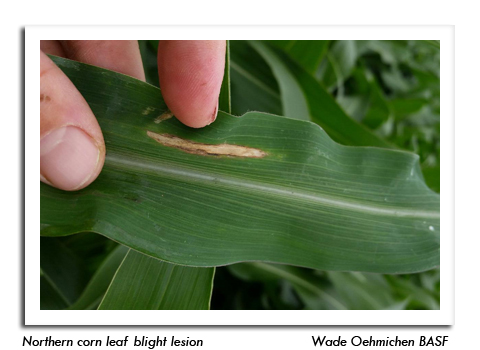
 |
|
|
Corn
Volume 61 Number 9 Date 06/23/2016 CORN ROOTWORM - Corn producers can expect to see the first beetles of the year and evidence of root damage starting by early July. Egg hatch has been underway since late May and should peak during the week of June 26-July 2 across much of southern and central Wisconsin. Evaluation of corn roots for pruning is recommended beginning 7-10 days after 50% rootworm egg hatch. Continuous corn and areas with Bt performance issues should be the highest priority for inspection and root ratings. EUROPEAN CORN BORER - Surveys found minor infestations affecting 1-8% of plants in a few fields sampled from June 16-22. First- and second-instar larvae were the predominant development stages in western Wisconsin. Control treatments will become less effective as boring into corn midribs and stalks begins in the week ahead. The optimal treatment window for first generation larvae has opened as far north as Eau Claire County with the accumulation of 800 degree days (modified base 50°F) and will close once 1,100 degree days have been reached. STALK BORER - Larval infestations remain light in most fields, seldom exceeding 5%. A few outlier sites in Dane and Richland counties had leaf feeding on 10-12% of the plants in the first four edge rows, but significant damage was not expected since the corn was in theV7-V8 stages. GRANULATE CUTWORM - This moth, which bears a strong resemblance to the western bean cutworm adult, is appearing in black light traps. The granulate cutworm is noticeably smaller, about ¾ of the size of the western bean cutworm. The annual flight of western bean cutworm adults is unlikely to begin until next week. NORTHERN CORN LEAF BLIGHT - UW-Extension Field Crops Plant Pathologist Dr. Damon Smith reported the first find of NCLB in Wisconsin on June 16, in V7-V8 Rock County corn. Early cases of NCLB have also been confirmed from Dane, Jackson, Juneau counties by a BASF specialist, with spore identification pending for Adams, Calumet, Green Lake and Waushara counties. The early appearance of NCLB this season indicates that farmers and consultants should increase corn scouting. Damon Smith reminds growers that disease development slows during periods of hot, dry weather, and that NCLB is currently affecting leaves that will be in the lower canopy of the plant and are not responsible for a large portion of grain yield. Fungicide applications, if justified, should be made as close to the tassel stage (VT) as possible for greater yield gain. Additional information from the UW is available at: http://fyi.uwex.edu/fieldcroppathology/2016/06/16/northern-corn-leaf-blight-positively-identified-in-wisconsin-in-2016/ -- Krista Hamilton, DATCP Entomologist 





|
|
|